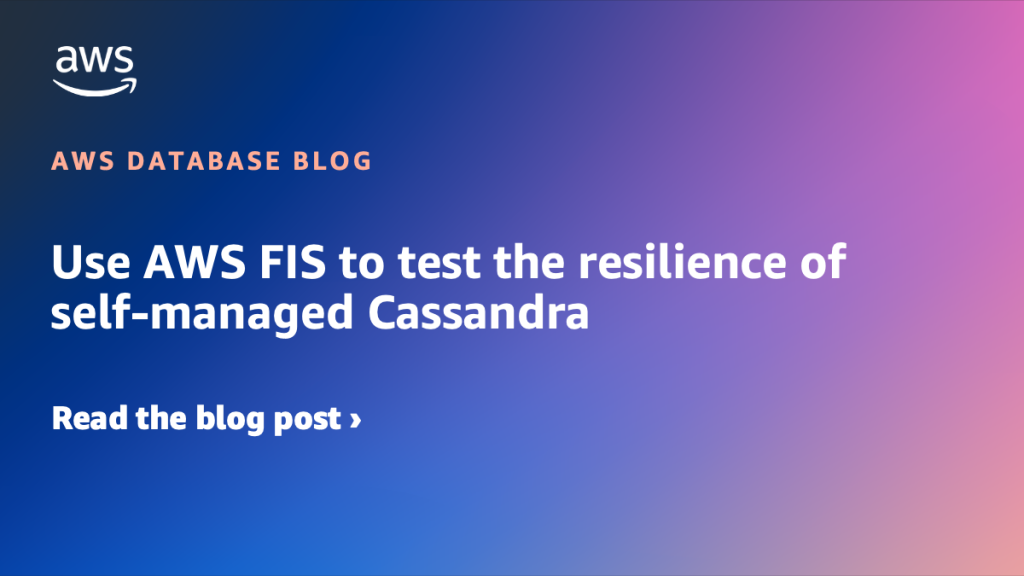AWS Database Blog
Tag: Apache Cassandra
Use AWS FIS to test the resilience of self-managed Cassandra
Database outages can have devastating effects on your applications and business operations. For teams running self-managed Apache Cassandra clusters, unexpected node failures or memory issues can lead to service degradation, data inconsistency, or even complete system outages. AWS Fault Injection Service (AWS FIS) is a managed service that you can use to perform fault injection experiments on your AWS workloads. In this post, we review how you can use AWS FIS to craft a chaos experiment to test the resilience of your self-managed Cassandra clusters running on Amazon EC2. This can help you understand your application’s ability to reestablish a connection to a healthy node.
Best practices for running Apache Cassandra with Amazon EBS
This is a guest post written by Jon Haddad an Apache Cassandra committer specializing in performance tuning, fixing broken clusters, and cost optimization. In this post, we discuss the basics of improving the performance of Amazon EBS with Cassandra to take advantage of the operational benefits. We explore some basic tools used by Cassandra operators to gain insight into key performance metrics. You can then apply these metrics to modify key operating system (OS) tuneables and Cassandra configuration. Finally, we review benchmarks on performance gains by implementing best practices for Amazon EBS.
Migrate Apache Cassandra databases to Amazon DynamoDB more easily
Customers tell us that migrating data between different database engines—also known as a heterogeneous migration—can be challenging and time consuming. Some customers such as Samsung had to figure out on their own how to migrate their Apache Cassandra databases to Amazon DynamoDB (see Moving a Galaxy into the Cloud: Best Practices from Samsung on Migrating […]


